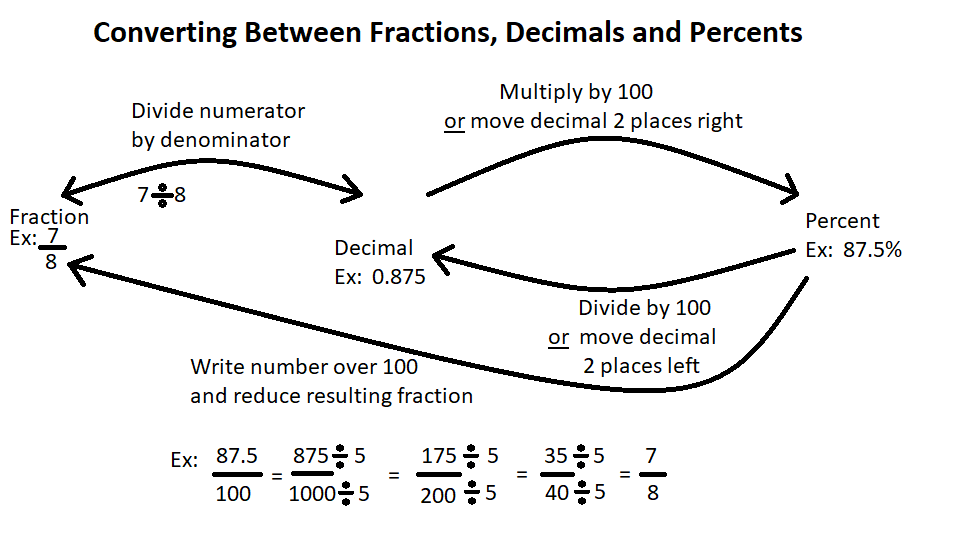Compare Fractions, Decimals, and Percents
( \newcommand{\kernel}{\mathrm{null}\,}\)
Learning Outcomes
- Compare two fractions
- Compare two numbers given in different forms
In this section, we will go over techniques to compare two numbers. These numbers could be presented as fractions, decimals or percents and may not be in the same form. For example, when we look at a histogram, we can compute the fraction of the group that occurs the most frequently. We might be interested in whether that fraction is greater than 25% of the population. By the end of this section we will know how to make this comparison.
Comparing Two Fractions
Whether you like fractions or not, they come up frequently in statistics. For example, a probability is defined as the number of ways a sought after event can occur over the total number of possible outcomes. It is commonly asked to compare two such probabilities to see if they are equal, and if not, which is larger. There are two main approaches to comparing fractions.
Approach 1: Change the fractions to equivalent fractions with a common denominator and then compare the numerators
The procedure of approach 1 is to first find the common denominator and then multiply the numerator and the denominator by the same whole number to make the denominators common.
Example 1
Compare: 23 and 57
Solution
A common denominator is the product of the two: 3×7=21. We convert:
2377=1421
and
5733=1521
Next we compare the numerators and see that 14<15, hence
23<57
Approach 2: Use a calculator or computer to convert the fractions to decimals and then compare the decimals
If it is easy to build up the fractions so that we have a common denominator, then Approach 1 works well, but often the fractions are not simple, so it is easier to make use of the calculator or computer.



